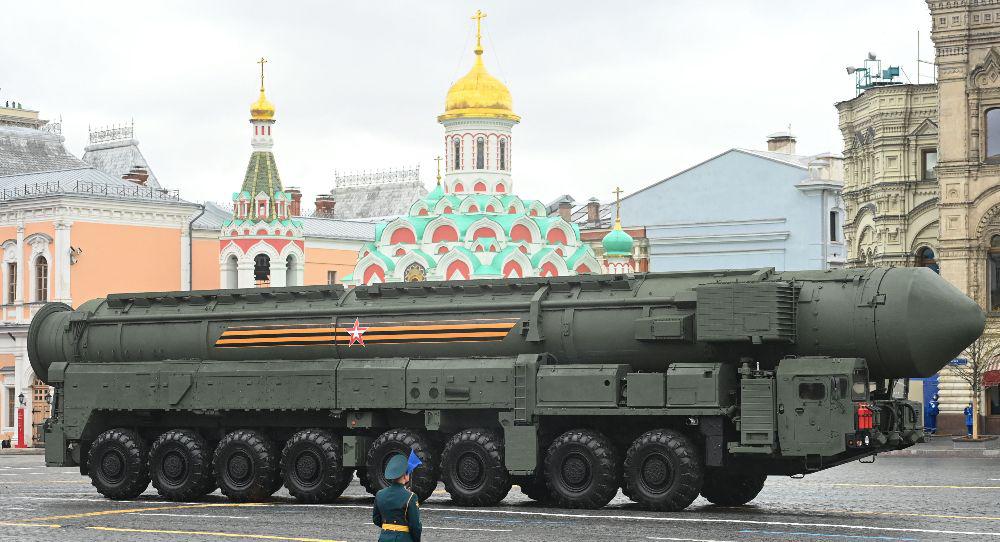Combating climate change is now at the top of the agenda for most governments. At the COP26 summit in Glasgow, an immense degree of cooperation, political will, and courage by world leaders will be required to reverse what so many experts argue is the predictable degradation of the climate.
But away from the headlines is another huge crisis affecting the planet. And that is the systematic dismantling of arms control.
Major efforts by Western powers are needed to put arms control and disarmament back on their agendas. These will have to include engaging Russia and especially China, which until now has been outside the arms control regime. Such efforts are indispensable, as the consequences of an uncontrolled arms race are too dire to predict.
The arms control regime was on a roll during the later years of the Cold War.
One of the first major agreements was the 1972 Strategic Arms Limitation Talks (SALT), signed between the United States and the Soviet Union. It introduced, for the first time, a numerical balance of carriers and warheads. The Anti-Ballistic Missile (ABM) Treaty was also negotiated as part of SALT. SALT II followed a few years later.
In 1987, the United States and Russia signed the Intermediate-Range Nuclear Forces (INF) Treaty. It prohibited the development, testing, and production of land-based short- to medium- and intermediate-range cruise and ballistic missiles and missile launchers. The agreement was crucial for Europe’s security.
And even as the Cold War ended in 1991, the SALT treaties were replaced with the Strategic Arms Reduction Treaty (START I). “The high time of arms control was between 1985 and 1995,” Ulrich Kühn, director of the arms control and emerging technologies program at the University of Hamburg’s Institute for Peace Research and Security Policy, told Strategic Europe.
Today, these key arms control treaties, just as the post-1945 multilateral institutions, are under threat.
The United States withdrew from the ABM treaty in 2002. Russia suspended the implementation of the Conventional Armed Forces in Europe (CFE) in 2007. Washington withdrew from the INF treaty in 2019. The United States and Russia walked away from the Open Skies Treaty in 2020 and 2021 respectively.
The one glimmer of hope is that the new New START treaty signed in 2010 by the Washington and Moscow has been extended to 2026.
Nevertheless, as Clara Portela, sanctions and arms control expert at the University of Valencia, argues, “in the absence of agreed limitations, there is no obstacle to a descent into an arms race with Europe as the most likely theatre of operations.”
Why is the arms control regime disintegrating?
One reason is the lack of trust between Washington and Moscow. Of course, both sides didn’t trust each other during the Cold War, either. Yet as Kühn explains, at that time both could gain from reducing conventional and nuclear weapons. The verifiable and transparent mechanisms to monitor reductions were impressive. Those attributes have been replaced with confrontation.
The U.S. war against Iraq in 2002 that almost destroyed the NATO alliance because of the divisions it sowed among the Europeans, Russia’s invasion of eastern Ukraine in 2014, and the U.S. withdrawal from the INF treaty, among other tensions, have left Europe vulnerable.
There is another reason for this standoff between Washington and Moscow. During the Cold War, China wasn’t considered a major military power or threat. Its growing arsenal of modern weaponry has changed that equation.
Portela argues that a key rationale at the root of the declining interest of the traditional nuclear powers in arms control is the lack of involvement of Asian nuclear actions, primarily China. In a recent paper, she notes that “Washington and Moscow are wary of maintaining commitments to each other that might hinder their ability to respond to challenges originating elsewhere.” That is to say, China.
For the United States, Beijing is as a strategic competitor. If that is the case, should it not be in the interest of the United States and Russia to revive and change the dynamics of arms control by including China?
Such an idea, for the moment, is naïve. It would require Beijing overcoming its notorious opacity of its nuclear capabilities and doctrine. And, as Kühn underlines, “you need a security environment and atmosphere that allows you to enter such talks. At the moment, the atmosphere is poisonous.”
Several European countries have tried to keep the language of arms control and disarmament alive. But the EU is divided on many aspects. The new Treaty on the Prohibition of Nuclear Weapons (TPNW) that came into force in January 2021 is one example. It prohibits the production, transfer, threat, or use of nuclear weapons under any circumstance. Most NATO allies and the nuclear powers opposed it on the grounds it would undermine the existing Non-Proliferation Treaty.
Yet the Europeans are aware that the future of arms control needs China and a new push by the United States. Except for its support for the Joint Comprehensive Plan of Action (JCPOA) to curb Iran’s nuclear ambitions, arms control is not on Beijing’s radar screen—nor on Washington’s. The geopolitical rivalry runs very deep.
Cynics suggest it may take a military crisis in the South China Sea to give arms control the impetus it needs, just as the Cuban missile crisis of 1962 was a catalyst for such negotiations. It’s a depressing thought. Maybe that’s all the more reason for the EU to engage with China on something as basic as seminars and workshops, while hoping U.S. President Joe Biden’s administration will revisit arms control.
This blog is part of the Transatlantic Relations in Review series. Carnegie Europe is grateful to the U.S. Mission to the EU for its support.





.jpg)
.jpg)

